Houseplant Problems Solved
Top 8 Common Houseplant Problems: Solved
You don’t have to have a green thumb to keep your houseplants lush and beautiful. With a little information about disease and pest warning signs/prevention and some basic houseplant know-how, you will be well on your way to a house full of healthy plants. Here, the experts at Fairview Greenhouses & Garden Center have compiled a list of the eight most common houseplant problems, as well a solution for each. In addition, we have also included a list of the six most common houseplant insects that like to make a feast out of your fanciful foliage. Looking to add a few houseplants to your repertoire? Let Fairview help you select the perfect plant for your home from of our vast houseplant selection.
1. Soil
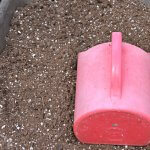
Use a professional potting soil to assure proper water retention and space (for aeration) to allow oxygen to get to the plant roots. Always allow enough room between plant and rim of pot for watering. Leave at least one inch for a six-inch pot, two to three inches for larger pots. Fairview has many varieties of potting soil to choose from.
2. Drainage
Make sure your pots have adequate drainage. Improper drainage can lead to root rot.
3. Watering
Not all plants have the same water requirements. For most plants, you can use the following formula: Fill a cup with water; water the plant one cup at a time, giving the water time to reach the bottom of the container; repeat until water drains into the saucer. Subtract the amount in the saucer from the total amount of water applied, thus giving you the amount of water needed to water your plant thoroughly.
How often you should water can depend on the time of year, location of the plant and the water requirements for that specific plant. As a general rule, you should inspect your plants every two to three days in the summer and once a week in the winter. A good test is to insert your index finger approximately one inch into the soil (for larger pots, go deeper). If it feels dry, it is time to water again.

Room temperature tap water is the best. Chlorine in tap water will not harm your plants, but fluoride can damage sensitive plants.
Most plants benefit from an occasional misting. Not only does this keep your plant clean from dust, but it also discourages spider mites. Mist plants in the morning when temperatures are cooler and the plant is not in the direct sun.
4. Lighting
Most foliage plants require bright light without direct sun. You should always check what your specific plant needs are before you purchase, making sure you have the correct conditions in your home or office. A sample of bright light is one that extends five feet around a window, which is sunlit for part of the day. A shade area is one that is bright enough to read in for several hours a day. If your location does not get enough light, a grow light can be used for a few hours each day.
5. Fertilizers
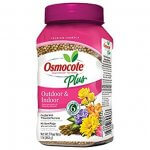
Use a time-released houseplant fertilizer, such as Osmocote, for your houseplants. Follow the instructions on the bottle. Some houseplants will benefit from a monthly application of a well-balanced, water soluble houseplant fertilizer. Water soluble fertilizers can be applied Spring – Fall but not in the winter.
6. Insects
When using any insecticides, be sure to read all instructions and precautions on container labels.
Many insects can invade your houseplants. Read below for details.
Mealybugs
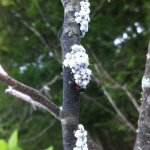
These are soft-bodied, wingless insects that suck the sap out of plants. This weakens and stunts the plant, causes leaf distortion, yellowing, and in some cases death of the plant. Mealybugs leave a sticky substance called honeydew, which attracts a black fungus called sooty mold. If there are only a few mealybugs on your plant, you can remove them with a cotton swap dipped in alcohol. If there is an infestation, remove what you can and use an insecticidal soap, such as Organic Summer Oil from Pharm Solutions, Inc. (available in our Garden Center). Also, using System Houseplant Granules will prevent future outbreaks from reoccurring. Follow the directions on the label.
Spider Mites
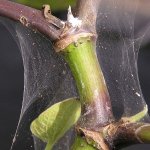
If your houseplants look mottled (spider mite damage pictured at left) and have webs on them, they are probably suffering from spider mites. The solution? Try hosing off the plants in the shower, followed by an application of an insecticidal soap or Ortho Systemic Insect Spray. You have to repeat this process two or three times within a month to completely rid your plants of mites. Follow the directions on the label.
Whitefly

These are tiny winged insects that are found on the underside of leaves. When you move the plant, they will leave the underside of the leaves and begin to fly around the plant. Use Ortho Systemic Insect Spray to get rid of these pests. Follow the directions on the label.
Aphids
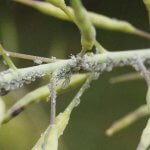
This is another insect that sucks the juice from the leaves. They also secrete honeydew which attracts sooty mold. Try hosing the plant off in the shower and then apply an insecticidal soap. Follow the directions on the label. Repeat if necessary.
Scale

This is usually a brown or black (sometimes white, pictured) insect with a shell-like body. These insects also secrete honeydew which attracts sooty mold. Remove any scale that you see with an alcohol-soaked cotton swab. Spray with Ortho Systemic Insect Spray. Follow directions on the label.
Fungus Gnats
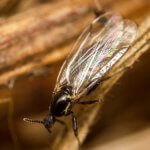
While these insects cause no harm to plants, they are annoying to us. Use Bonide All-Season Spray Oil. Follow the directions on the label.
7. Odema
A Condition caused by over watering. Brown spots appear on the leaves.
8. Bacterial & Fungal Problems
Although these two classes of diseases are caused by two very different types of microscopic (or very small) organisms, they both are usually the result of stressful or poor growing conditions. It is normal for some bacteria or fungi to be present on plant material, however problems arise when poor growing conditions cause them to multiply and grow. Since bacteria and fungi are often spread by water, it goes without saying that water is also the method in which these diseases are often spread. Poor air circulation, over watering or under watering, poor drainage, too little light, and crowding can also be factors in these types of infections. The high humidity of the summer months and the low lighting conditions of the winter months are the prime times for these diseases to occur.
Bacterial diseases…
are usually expressed as leaf spots that look water soaked and can have yellow halos. If conditions are really wet, these spots will usually be the same size and can run together. Under really dry conditions, these spots will not increase in size, but will turn reddish brown and will dry out. There is no cure, but you can carefully prune and discard the infected leaves. You will need to disinfect your cutting tools with a solution of nine parts water to one part bleach between each cut. If the plant is really infected, the best solution is to discard the plant before other plants are infected.
Fungal diseases…
can be expressed as leaf spots, wilting stems and/or root rot. The most common fungal disease is root rot, usually caused by letting the plant set in a pot with no drainage, or simply by over watering. The leaves and stems of the plant may show wilting symptoms and the roots can be brown and soft. If symptoms are not too severe to warrant discarding, the plant can be re-potted (remove bad roots) with sterilized potting soil and a fungicide drench may be applied (following manufacturers directions). Fungal leaf spots are small brown spots with yellow margins, that can have a target pattern. They can run together and make the entire leaf die. If you take a hard lens, you can often see the small reproductive spores. If these are not too far along, you can use a fungicide spray at the recommended rates and intervals. Powdery mildew, which is a whitish-colored fungal infection, can be one of the hardest types of fungal diseases to control.
The best control for both bacterial and fungal diseases is simply prevention. Since water is most often the mode of spreading these types of infections, practicing proper watering procedures helps to reduce the risk of infection.
- Do not water houseplants from above (on their foliage); instead, water at the base of the plant (or the lip of the pot).
- Check the soil to make sure it is dry and the pot to make sure there is adequate drainage.
- Properly space your houseplants to make sure there is plenty of space and air movement between plants.
- Make sure there is adequate light for the type of plant you are growing.
If you purchase healthy plants and follow these conditions, you should be able to keep your plants healthy and disease-free.




